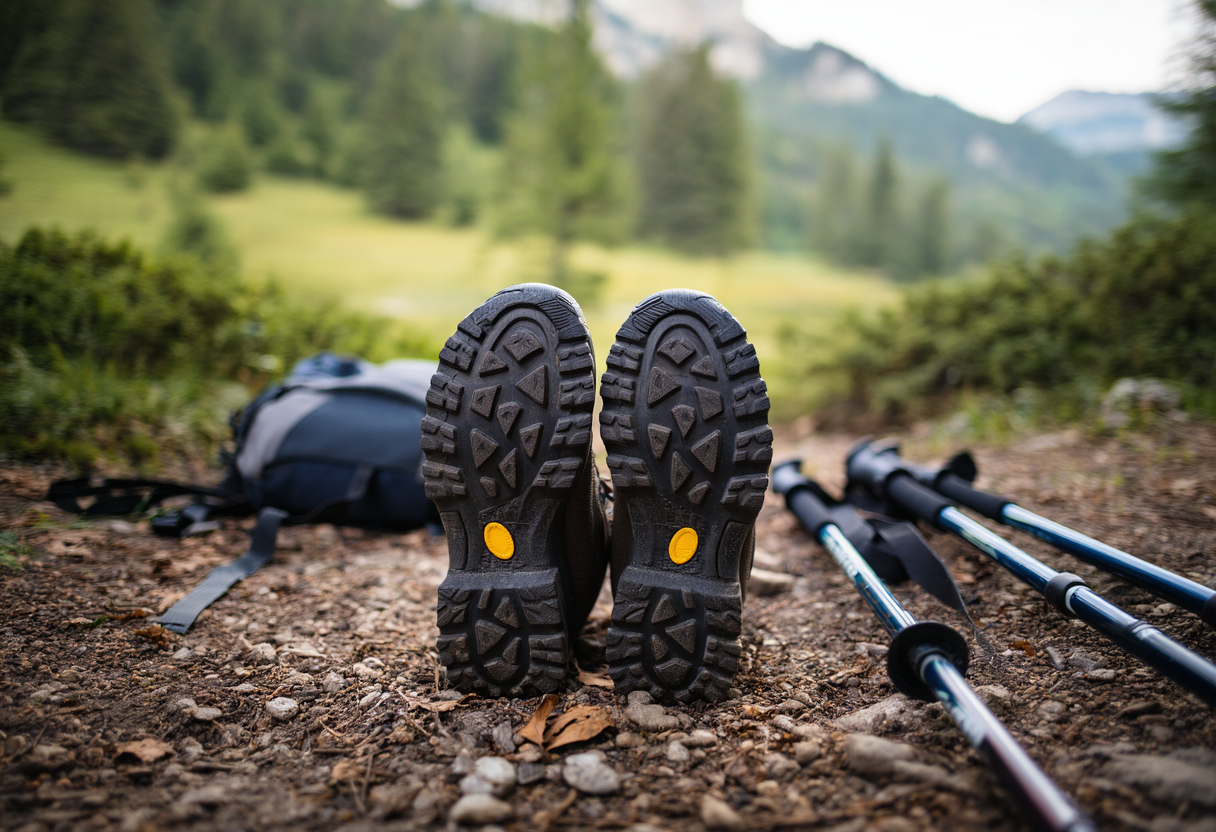The Ultimate Guide to Choosing the Best Hiking Boots for Your Adventures
Selecting the right hiking boots is crucial for an enjoyable outdoor experience. This guide explores essential factors like fit, material, and tread patterns. Whether you're hitting the trails for a day hike or a week-long trek, understanding your personal needs helps you choose the perfect pair. Learn about the latest technologies that enhance performance and comfort, ensuring every step is secure and comfortable during your adventures.
The Importance of the Right Hiking Boots
When embarking on outdoor adventures, the significance of selecting suitable hiking boots cannot be overstated. Hiking boots not only provide necessary foot support, but they also protect against various environmental factors. Selecting the right pair of hiking boots can greatly enhance your experience, reducing blisters, fatigue, and pain. To begin with, proper fit is paramount; a well-fitting boot will provide the comfort needed for long hikes. Furthermore, the material of the hiking boots plays a crucial role in their performance. For instance, leather boots offer durability and water resistance, while synthetic materials often provide better breathability. In addition to these factors, tread patterns are critical for traction on slippery or uneven terrains. In sum, these boot attributes collectively influence your hiking experience.
Key Features to Look For in Hiking Boots
When searching for hiking boots, understanding the key features can simplify your decision-making process. Firstly, consider the level of support you need: lightweight boots work for day hikes, while heavier-duty boots are optimal for more challenging treks. Secondly, prioritize waterproofing; materials like Gore-Tex provide excellent dewy protection. Next, inspect cushioning; ample cushioning translates to comfort on long hikes. Additionally, the weight of your hiking boots can affect endurance; lighter boots reduce fatigue, which is particularly evident during extended treks. Lastly, assess the toe protection; reinforced toes safeguard against rocks and injuries. By focusing on these essential features, your chances of selecting the best hiking boots increase significantly.
Understanding Terrain and Its Impact on Hiking Boots
The type of terrain you plan to tackle is directly linked to your choice of hiking boots. For rocky arenas, sturdy hiking boots with ample traction are vital to prevent slips and maintain balance. Conversely, soft, muddy trails require more lightweight options that allow for quick movement. When navigating steep inclines or abrupt drops, high-ankle boots offer indispensable ankle support for stability and safety. Each environment demands different attributes from your hiking boots, translating into your performance and safety. Therefore, being mindful of the landscape is essential when selecting your footwear. Knowing the terrain helps in understanding how different materials and designs can either hinder or enhance your hiking experience.
Innovative Technologies in Hiking Boots
The evolution of hiking boots has seen the integration of innovative technologies that enhance performance. For instance, built-in cushioning systems now offer superior comfort, minimizing shock during impact. Breathable linings paired with waterproof materials ensure your feet stay dry and comfortable, even in damp conditions. Furthermore, the latest stability technologies help prevent twisting, providing crucial support for uneven surfaces. Brands have also embraced eco-friendly materials, aligning your outdoor pursuits with sustainable practices. This merging of technology and eco-awareness means consumers can enjoy nature without compromising future generations. Investing in modern hiking boots equipped with these technologies translates to better performance and an enjoyable hiking experience.
Choosing the Right Hiking Boots for Various Conditions
Different hiking conditions necessitate distinct features in hiking boots. In cold weather, insulated boots are paramount to keeping your feet warm in freezing temperatures. While summer hikes may require boots with enhanced ventilation. Additionally, wet conditions demand boots equipped with top-notch waterproofing to keep moisture at bay. Altogether, selecting boots according to the expected conditions further ensures comfort and safety on your hikes. Taking time to analyze the climate, season, and weather patterns aids in making an informed decision. Remember, the best hiking boots are those that suit the specific demands of the location and weather, helping you to conquer any trail.
Conclusion: Invest in Quality to Elevate Your Hiking Experience
Investing in high-quality hiking boots can elevate your hiking experience by ensuring comfort and safety. Consider your hiking habits, terrain, and conditions to make an informed purchase. With the right hiking boots, you can enjoy longer trips without the worry of discomfort or potential injuries. Do not overlook the importance of trying on boots and walking around in them before committing to your choice. A good pair of hiking boots should feel like an extension of your foot, allowing for natural movement. Let technology and quality guide your selection, transforming your hiking adventures into a joyful escape.
